General
Transport
People
Accomodation
Food & Drink
Sightseeing
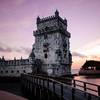 What to see in Portugal?
What to see in Portugal?
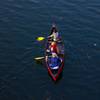 What to do in Portugal?
What to do in Portugal?
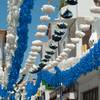 Are there any festivals in Portugal?
Are there any festivals in Portugal?
 What are the best tours to take in Portugal?
What are the best tours to take in Portugal?
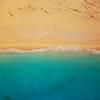 What are the best beaches in Portugal?
What are the best beaches in Portugal?
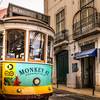 Are Lisbon and Porto city cards worth buying?
Are Lisbon and Porto city cards worth buying?
 What museums in Lisbon offer free entry?
What museums in Lisbon offer free entry?
Legal
Money
Safety & Health
Family travel
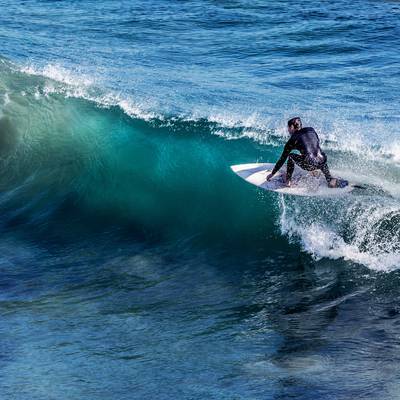
What should I know about surfing in Portugal?
There’s a handful of countries in Europe with plentiful good surf, but when you consider all of the factors, surfing Portugal might be the best. The food and wine are delicious, the cost of living on the more-affordable side (one of the cheapest in Western Europe), and the people are friendly.
The main surf centers of Peniche, Nazaré, Cascais, and Ericeira are home to some of the best waves on the European continent, and they are only the tip of the iceberg. For every wave you have heard of, there are dozens more littering the coast, which faces straight into the Atlantic and picks up tons of swell.
Portugal also picks up a lot of weather, but with so many nooks, crannies, and bits of coastline facing different directions, it is almost always possible to score good waves. In fact, a few years back, the Portuguese tourism bureau famously offered a “guaranteed score” deal to visiting surfers, promising to finance a return trip to the country for anyone who got skunked.
Any country this rich in waves will typically have a large surf scene and Portugal is no exception. Thousands of traveling surfers and backpackers looking to learn flock to the surf schools and surf camps in the regional centers, where the only thing as consistent as the waves is the nightlife. Here's a regional overview of surfing spots in Portugal:
Peniche. Home to numerous surf schools, a world tour event, dozens of quality waves (including the famed Supertubos), and thousands of backpackers living out their surf van fantasies, Peniche is a quaint little town that has become one of the biggest surf scenes in Europe. Whether you are looking to surf drained-out sand-bottom barrels, stand up for your first time in rolling beginner waves, or simply spend a warm night in a shack, this is the place to do it.
Cascais. Located a stone’s throw from capital city Lisbon, Cascais is a resort town with a laid-back vibe, beautiful beaches, and a bunch of super fun waves. There was a women’s world tour event there for much of the past decade, and numerous surf schools, shops, and camps have sprung up as the Portuguese surf industry has grown. For an affordable European surf experience with a coastal resort feel, Cascais fits the bill.
Nazaré. Until 2010, Nazaré was little more than a blip on the pro bodyboard tour – a heavy beach break with astronomical potential that the surf world had somehow missed. Then Hawaiian big wave surfer Garret MacNamara was invited to Nazaré by Dino Casimiro to check out Praia de Norte, a wave that the local bodyboarder thought might be the biggest in the world. A decade later, Nazaré has become ground zero for XXL surfing.
Ericeira. Largely considered to be Portugal’s surf capital, Ericeira has a huge variety of waves ranging from beginner spots to expert only. It is one of the few regions to be named a World Surf Reserve, and the first in Europe. With beach breaks, slabs, and points such as the world-class Coxos (one of the best right-handers in Europe), Ericeira should be a bucket-list destination for every surfer from the European continent.
Algarve. The Algarve’s position on the corner of the Iberian Peninsula blesses it with the widest swell window in Portugal and frequent offshores on the south coast. There’s a wide range of reef and beach breaks, and the vast unspoiled coast gives you the potential for uncrowded waves. Waves can be found year round in the region, but the summer can bring some flat spells. While May through July is typically the least favorable time for more advanced surfers, if you’re just learning to surf, summer is a great time to visit, as the waves are small, and the weather and water are warmest. The peak season for advanced surfers is from October through December.
The islands. Many people forget that Portugal is more than just a country on the European continent. It also has a number of islands, including Madeira and the Azore chain. These volcanic islands have a variety of waves as well, including numerous points that break along picturesque cliffs.
Portugal has just about every type of surf spot available, including slabs, point breaks, soft beach breaks, hollow sandbars, and the world’s biggest XXL spot. Depending on where you go, you could surf a mellow beginner wave, the world’s heaviest big wave, or anything in between.
Summer (June through September) tends to have the best weather, but doesn’t get much in terms of swell. Winter (December through March), on the other hand, has non-stop waves, but the wind and weather can be an issue. As with most places in the northern hemisphere, autumn (September through November) is prime season, with good weather, predominantly favorable winds, and relatively consistent west swells out of the Atlantic.
While the major surf centers like Peniche and Ericeira can be incredibly crowded (especially at the waves frequented by surf schools), the reality is that 90% of Portugal’s surf has never been featured in the media, so if you are willing to get away from the big-name zones and do some searching, you can easily surf world-class waves alone or with a few friendly locals. Make friends while in the country, and you just might find yourself being led to secret points and beach breaks that are even better than the spots you’ve seen in the magazines.
The water in Portugal ranges greatly by season, and also somewhat by location (with northern beaches being slightly colder on average). Peniche is centrally located and sees water temperatures up into the low 20s° C during summer, and down around 15° C in winter.
Portugal has great infrastructure, and virtually all surf spots are accessible by car. Rental vehicles are readily available. The van life scene is huge in Portugal, with thousands of backpackers and surfers touring the country in camper vans.
As with every destination, Portugal has a peak season and low season for tourism and travel costs vary depending on the time of year. Surfing in Portugal is especially great because the best time of year for waves corresponds to the low season for tourism, which means the best pricing and more availability.
Peak season for tourism in Portugal is generally the summer, roughly June through September when the water is warmest and prices are highest. The low season for tourism is winter, roughly December through March when the weather is colder and the waves are pumping.
Portugal does get waves year-round, but if you’re an intermediate to advanced surfer, it's recommended visiting in the fall and winter seasons for the best waves. If you’re a beginner then any time of year will work, with the summer having the warmest water and most gentle waves.
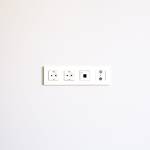
What type of adapter do I need for the outlets?

Am I expected to tip in Portugal?

How do I use ATMs in Portugal?

What can I bring home from Portugal?
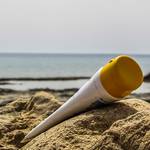
Should I take any health precautions when traveling to Portugal?
